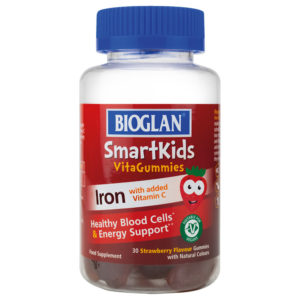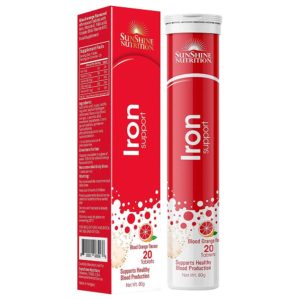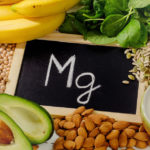Sometimes, kids experience severe headaches or fatigueness. And this makes us, as mums, rush our kids to the doctor. There, you might be surprised that your child has iron deficiency. Most mums are shocked by this thinking it is way too early for my child to experience this. But in fact, children are affected by vitamin deficiency the minute you start them on solid foods. In other words, this starts when a baby is 6 months old. Kids iron deficiency is very common. Learn here the symptoms, treatments, and the best foods to fight iron deficiency in kids.
Iron deficiency in children: all you need to know
Iron deficiency symptoms
Children at 6 months old are not too young to experience iron deficiency. In fact, once your child starts eating solid foods, he or she might experience iron deficiency symptoms. Especially that the foods that contain iron are not suitable for their diet at this age. Other children might experience this at the age of 5 years old. That is a result of being a picky eater who relies on dairy products more than foods that contain protein. In addition, teenage girls are more likely to experience iron deficiency. That is mainly because of the hormonal changes their bodies go through due to menstruation.
The main concern mums have when they hear kids iron deficiency is whether it is dangerous or not. The truth is, if we treat it quickly it is not dangerous. However, leaving it untreated might lead to bigger health concerns, such as anemia. Moreover, iron is a very important mineral which enhances our children’s healthy development. And that is why it is important to keep an eye on your child’s iron levels.
It is also important to keep an eye on iron deficiency symptoms, such as:
- – Skin paleness.
- – Overall tiredness and fatigueness.
- – Cold hands or legs at all times.
- – Slow development; physical or intellectual.
- – Lack of appetite.
- – A desire to eat unusual things, such as dirt or ice.
- – Weak immune system.
- – Increased heart rate.
- – Breathlessness.
- – Swollen tongue.
- – Irritability.
Iron deficiency treatments for kids
1| Including foods that are filled with iron.
As we mentioned before, toddlers start eating solid foods at the age of six months old. Therefore, make sure to include foods that are filled with iron at this age. It is never too early to start doing so.
2| Cutting down on formula or milk.
Make sure not to over feed your child milk or formula. Especially around 1 to 5 year old children. The best amount of milk for kids at this age is 710 milliliters per one day. That is mainly because calcium can make children’s bodies absorb iron less than it actually should.
3| Boost their iron intake.
You can do so by adding about 100 grams, or half a cup of foods that are filled with vitamin C. For example, you can include broccoli, berries, oranges, grapefruit, and bell peppers in their diet to achieve that.
4| Depend on various iron sources.
In addition to the foods we mentioned above. There are other great resources for iron to include in your child’s diet. Some of the best vegetarian sources for iron are lentils, tofu, and pulses.
5| Include onions and garlic in your child’s diet.
Adding onions and garlic to your child’s diet is very important. As it increases their bodies ability to absorb minerals such as iron and zinc.
6| Use supplements and vitamins.
For some kids with iron deficiency, doctors recommend relying on supplements to increase their iron intake. So, if your doctor recommends so, make sure to follow through and give your child the right recommended dosage.
Best food for kids with iron deficiency
- 1. Red meats
- 2. Green leafy vegetables, such as spinach.
- 3. Beets and sweet potatoes.
- 4. Grains, such as rice, quinoa, and oats.
- 5. Pulses, like lentils, beans, chickpeas, and kidney beans.
- 6. Dried fruits, including apricots, raisins, and dried peaches.
- 7. Nuts, like cashews and pumpkin seeds. But only for older kids.








